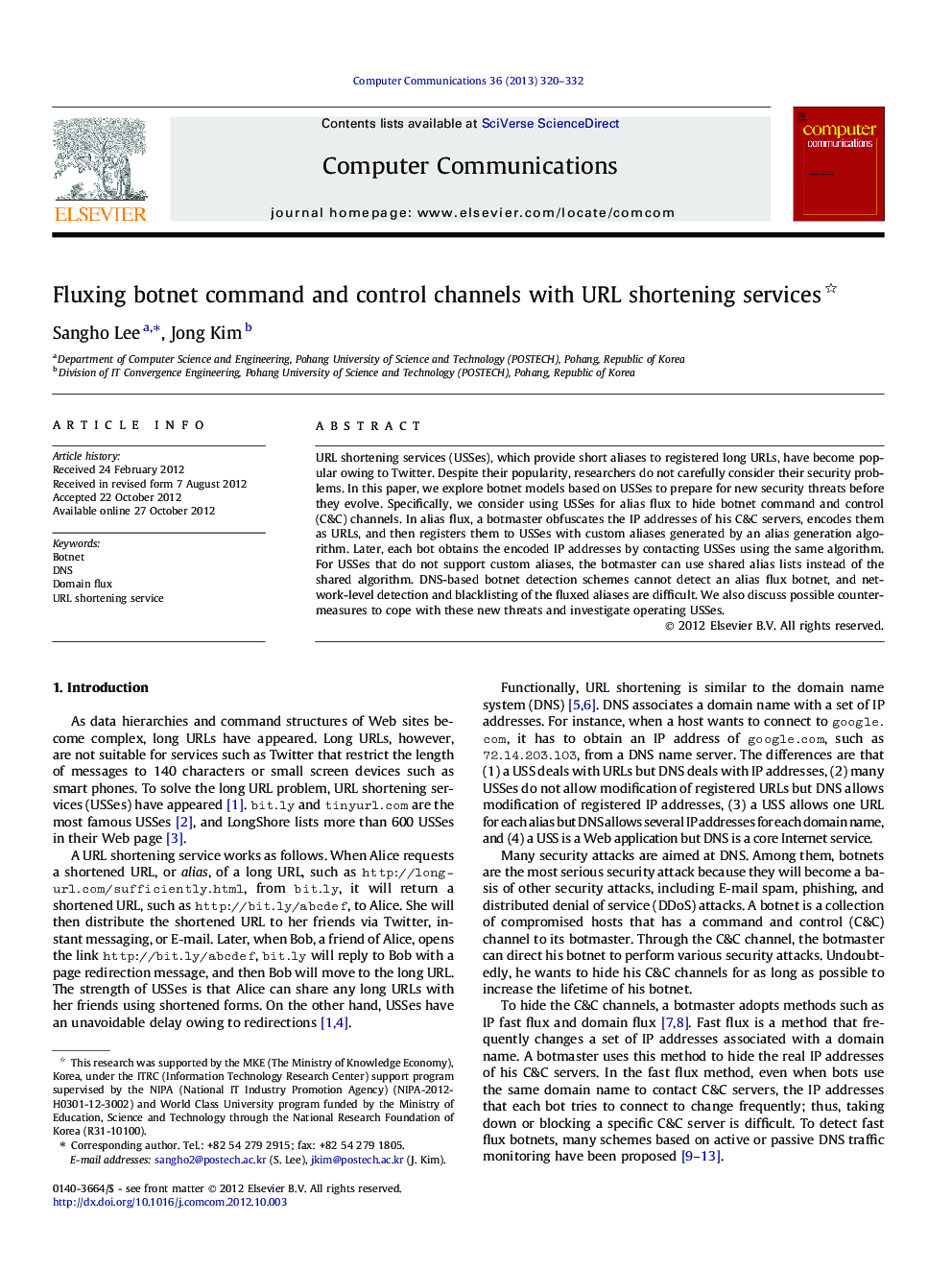| Article ID | Journal | Published Year | Pages | File Type |
|---|---|---|---|---|
| 448358 | Computer Communications | 2013 | 13 Pages |
URL shortening services (USSes), which provide short aliases to registered long URLs, have become popular owing to Twitter. Despite their popularity, researchers do not carefully consider their security problems. In this paper, we explore botnet models based on USSes to prepare for new security threats before they evolve. Specifically, we consider using USSes for alias flux to hide botnet command and control (C&C) channels. In alias flux, a botmaster obfuscates the IP addresses of his C&C servers, encodes them as URLs, and then registers them to USSes with custom aliases generated by an alias generation algorithm. Later, each bot obtains the encoded IP addresses by contacting USSes using the same algorithm. For USSes that do not support custom aliases, the botmaster can use shared alias lists instead of the shared algorithm. DNS-based botnet detection schemes cannot detect an alias flux botnet, and network-level detection and blacklisting of the fluxed aliases are difficult. We also discuss possible countermeasures to cope with these new threats and investigate operating USSes.
